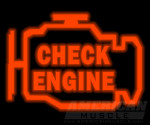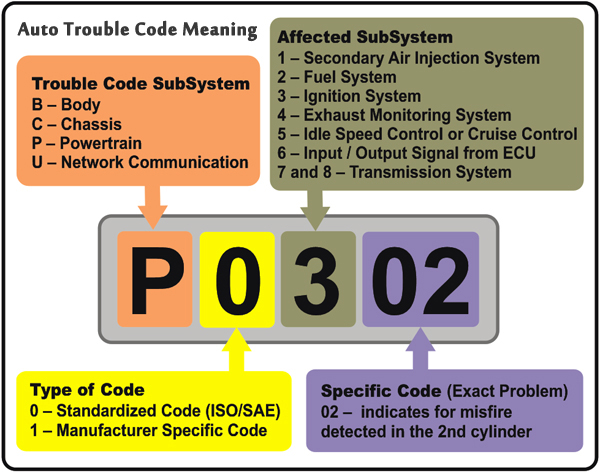Auto Trouble Codes

|
Auto trouble codes (or fault codes) are codes that are stored by the on-board computer diagnostic system.
These are stored in response to a problem found in the car by the system.
These codes are stored when a sensor in the car reports a reading that is outside the normal/accepted range
The codes identify a particular problem area and are intended to provide the technician with a guide as to where a fault might be occurring within a car. The codes should be used in conjunction with the vehicle's service manual to discover which systems, circuits or components should be tested to fully diagnose the fault. |

Repair Issues like a AutoTroubleCode.com understand the issue with your car, repair the problem yourself or simply know what the issue is before you take it to a mechanic. No surprises no extra costs can be pushed on you from the mechanic. Emissions Status. This tool will run a number of self checks to monitor the health of your vehicles emission system. It can help you get through emissions and shut off emission codes that pop up randomly.
Four basic categories of OBD2 Codes:
P for Powertrain which means the engine, transmission, emissions, and ignition to name a few. The codes associated with P is the largest set of codes.
B for Body includes items such as power seating and airbags.
C for Chassis which covers the anti-lock braking system (or ABS), axles, and brake fluid.
U for Undefined, meaning that any other aspect of the car is going to be found in this system.
0 and 1 (Generic and manufacturer specific codes)
The first digit in the code will tell you if the code is a generic or manufacturer specific code.
Codes starting with 0 as the first digit are generic or global codes. It means that they are adopted by all cars that follow the OBD2 standard. These codes are common enough across most manufacturers so that a common code and fault message could be assigned.
Codes starting with 1 as the first digit are manufacturer specific or enhanced codes. It means that these codes are unique to a specific car make or model. These fault codes will not be used generally by a majority of the manufacturers.
The first digit might be also 2 or 3. In this case the type depends on the system. B2xxx and C2xxx codes are manufacturer controlled while B3xxx and C3xxx codes are reserved at the moment. P2xxx codes are generic codes while P3xxx codes are manufacturer controlled. U2xxx codes are manufacturer controller as well as U3xxx codes.
Types of DTC
There are two types of obd codes (DTC) that apply to OBD II. I have them listed below with Type 1 being the more important because they can cause quick and severe damage. Type 2 being not quite as important but you still need to deal with it.
Type 1
- Emissions related (things like EVAP codes).
- Illuminates the MIL after one "driving cycle" that has failed.
- Creates a trouble code freeze frame (information about other things that were going on in the engine) after one "driving cycle" that has failed.
Type 2
- Emissions related OBD codes that aren't causing lost of pollution.
- Will set a "pending" trouble code after one failed driving cycle.
- Will clear a "pending" trouble code after one successful driving cycle.
- Turns on the check engine light after two consecutive failed driving cycles. Stores a freeze frame after two consecutive failed driving cycles.
How To Read OBD/2 Auto Trouble Code ?
Messages sent over a CAN network are standardised over what information each bit of the message contains with this message transmitted over the CAN bus can be received and decoded at the OBD-II port of the vehicle. When you plug your OBD code scanner you will see the 5 digit auto trouble code.

On-Board Diagnostics (OBD) is a built-in diagnostics system for vehicles that allows users to connect and receive information from the vehicle's CAN. The diagnostic information that can be collected includes system status, rpm, air flow and malfunctions. The OBD standard has developed into the modern OBD-II standard.
What Does OBD Scanner Do ?
Analog/Digital Gauges (160/215 Generic PIDS) List View (220 Generic PIDS) Freeze Frame Data Read Current Faults Clear Faults O2 Sensor Test Result (Non CAN Bus) On-board Test Result Read Pending Faults Evaporative System Leak Test VIN, Performance Tracking Data, ECU Name, Calibration and Verification ID Read Stored Faults
AutoTroubleCode.com Supported OBD CODES
OBD1 & OBD2 (California ARB - applies to North/South America) EOBD (European OBD) JOBD (Japanese OBD) ADR (Australian OBD) JDM (Asian OBD)
Code Search
Please fill the search bar to find Auto Trouble Code meaning.
